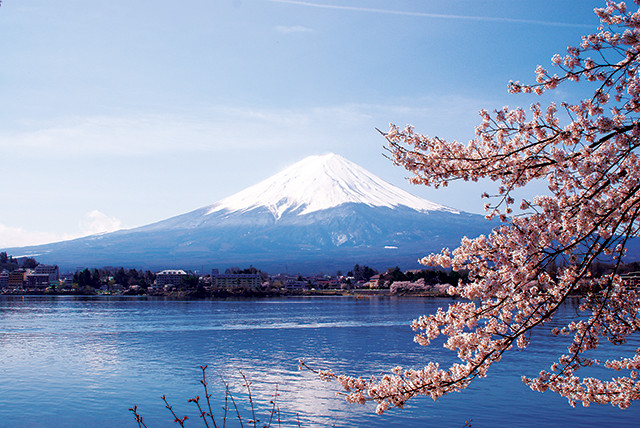
by Mary Caperton Morton Thursday, May 19, 2016

With a peak elevation of 2,335 meters, Mount Fuji is the highest mountain in Japan. Credit: Midori, CC BY 3.0.
On March 15, 2011, four days after the magnitude-9 Tohoku megathrust earthquake and tsunami struck Japan, a magnitude-5.9 earthquake shook the southern flank of Mount Fuji. Seismicity has been rare at the volcano since its last eruption in 1707, leading many researchers to suspect that the Fuji quake — which hit about 300 kilometers southwest of the megaquake — was remotely triggered by the Tohoku event. In a new study, scientists looking at the volcano’s underlying structure and plumbing have offered a potential mechanism for how Tohoku’s shaking could have touched off the Fuji earthquake: through rising gas-rich fluids released from the magma chamber beneath the volcano.
“Seismicity at Mount Fuji has been very low for 20 years, and volcanologists were shocked by the quake,” says Koki Aizawa, a geophysicist at the University of Tokyo and Kyushu University in Japan and lead author of the new study, published in Geology. “We were really surprised and worried about an eruption because the hypocenter [of the Fuji quake] was located above the magma chamber.”
To study the trigger mechanisms for the Mount Fuji temblor, Aizawa and colleagues surveyed the plumbing and groundwater system surrounding the volcano in detail using magnetotelluric resistivity and isotopic analyses. The magnetotelluric method relied on local variations in Earth’s natural electromagnetic field to image subsurface structure; meanwhile, isotopic analysis of hot spring waters sampled from boreholes around the volcano tested whether the water — and the gases in it — derived from near the deep magma chamber or a shallow aquifer.
“We found a mechanically weak zone [within the volcano] that is apparently susceptible to remote seismic triggering,” Aizawa says. This weak zone, a northwest-trending fault zone surrounding the hypocenter of the Fuji quake, was identified by high electrical conductivity in the researchers’ magnetotelluric survey. Meanwhile, the isotopic analysis revealed high levels of magma-sourced gases like helium and carbon dioxide in the groundwater. “With the results of the isotopic analysis, we interpret this electrically conductive zone … as a fracture zone that allows magmatic gas to move upward through the groundwater network,” he says. Seismic waves from the Tohoku quake may have kickstarted an upwelling of gas-rich fluids and bubbles from the volcano’s magma chamber along this fractured pathway, leading to an increase in pore pressure in the fault zone, which ultimately set off the Fuji earthquake, the team wrote.
Remote triggering by both distant and local earthquakes has been observed at other volcanoes, most often in highly active volcanic systems. “Mount Fuji is unique in that the remote triggering occurred at a very quiet volcano,” Aizawa says. The study presents a rarely seen perspective on subvolcanic structure, one that was aided by Japan’s dense seismic monitoring networks. “Even at active volcanoes, [the underlying] local geological structure is rarely studied to discern” how seismicity could be remotely induced, he says.
When it comes to remote triggering of earthquakes, proving causality can be difficult, says David Hill, a seismologist with the U.S. Geological Survey in Menlo Park, Calif., who was not involved in the new research. “We always have to ask: Is it really triggering or just coincidence?” he says. “The evidence they have all points to the same process: a deep source of magmatic gases, which then migrate up, increasing the pressure [in the fault zone near Fuji] and setting off a quake. I think they have a pretty good case.”
Fuji is an ideal place to study the poorly understood phenomenon of remote triggering because it is so well monitored, Hill says. This study identifies some intriguing structural features underground, many of which are similar to “other volcanic systems in earthquake-prone landscapes, such as Mammoth Mountain [in California].”
Since 2011, Mount Fuji has remained characteristically quiet, but Japanese geoscientists keep a close watch on the volcano, which lies 100 kilometers southwest of Tokyo. “This work highlights the possibility that future eruptions could break out along this newly recognized weak zone,” Hill says. “A better understanding of the plumbing system under the volcano will enhance our ability to make more useful predictions about future hazards.”
© 2008-2021. All rights reserved. Any copying, redistribution or retransmission of any of the contents of this service without the expressed written permission of the American Geosciences Institute is expressly prohibited. Click here for all copyright requests.